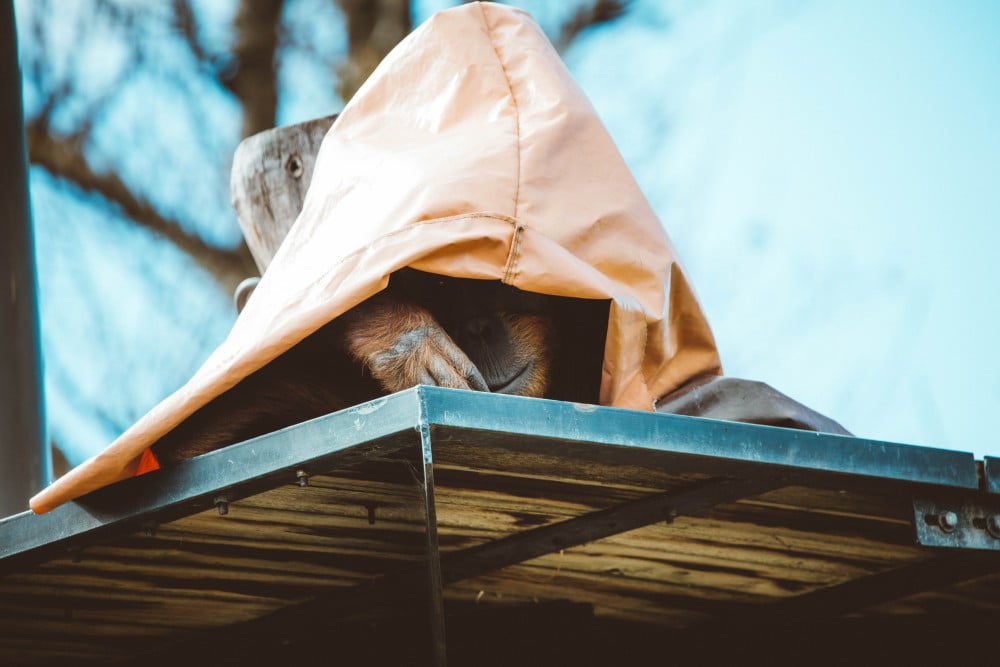The Enrichment Compensation Climate in Captivity
Behavioural enrichment, environmental enrichment or behavioural husbandry are topical words within the captive environment. Zoos and aquariums carry out enrichment for a number of reasons, namely to support good animal care. Qualified as practices that aim to enhance the quality of captive animal care by providing stimulating physical and social environments, enrichment has become a key component of a zoo keeper’s daily activity. Good enrichment can prevent boredom that can result in negative and harmful behaviours, and it can stimulate positive, species specific and natural behaviours. It can support improved breeding outcomes by promoting natural social interactions, and can also improve the visitor experience; the public want to see active, healthy animals rather than bored, lethargic ones.
Enrichment came about due to the fact that the captive environment will always have limitations when it comes to mimicking an animal’s natural environment. Animals have evolved specific skills and behaviours to survive and a zoo environment doesn’t always allow for these behaviours to be expressed. Not all behaviours are equal (time and energy used are usually good indicators of how important a behaviour is to an animal in the wild) and enrichment often allows for the captive environment to offer choices that allow the animals to perform the positive behaviours they have evolved to carry out. Without this opportunity, animals will become frustrated. So why do these limitations exist in the first place? Sometimes it is just impossible to accommodate for natural behaviours, animals predisposed to migrate yearly, killer whales that demonstrate collaborative hunting and social behaviours and dive to the depths of 980 ft. Zoos and aquariums simply cannot accommodate these sorts of behaviours and try and mitigate the consequences through other means.
But where natural behaviours can be provided for, some zoo environments still don’t always provide. Enclosures are designed in a manner that must meet a multitude of needs and doesn’t necessarily prioritise the behavioural needs of animals. Historically, health care has taken precedence in measuring animal welfare and as such, environments are created that allow for easy access, maintenance, intervention, training, and bio-security measures. Sometimes visitor needs are also considered over animal needs, ensuring 360 observational access, “pretty” environments that look natural from the perspective of the visitor, but don’t actually meet the animal’s specific needs.
In summary, these environments restrict natural behaviours, and the result? They provide enrichment. This compensation climate within the zoo culture is self-perpetuating – a sub-standard enclosure design results in negative behaviours, enrichment intervention is required which results in a demonstration of care and encourages further intervention.
So, what would a zoo look like if it didn’t need enrichment and could they actually exist?
For starters, it would need to provide an environment that allows animals to choose to perform normal and positive evolved behaviours at all times, but this is not a simple task. Nature itself is a changing environment, with species adapted to change behaviours dependent on season, food availability, reproductive status etc. A captive environment can never replicate the spontaneity of life in the wild; or the adaptive behaviours that arise from this extemporaneity, so some form of “enrichment” will always be needed. And zoos cannot provide all the desired or evolved behaviours from every species so must mitigate this by providing stimuli that mimics these behavioural drives and outcomes. Zoos and aquariums also have a moral responsibility for the lives of the animals within their care, and consequently will always need to be able to monitor and carry out health checks to some degree. As such, an enclosure can never allow for a completely “free living” environment.
It may be impossible to create the perfect enclosure for many species, but zoos can still make some immediate improvements…
Zoos can prioritise behavioural needs alongside human intervention, so there is more of a balanced management approach. Zoos can lend more weight to behavioural indicators for animal welfare and health assessment rather than being heavily reliant on health assessments and consider this within their designs. They can ensure that visitors understand that animals need space to retreat too and won’t always be on view, and the specific behaviours that are important to that particular species. This means that more enclosures can be designed that encourage normal and natural behaviours 24/7 rather than the emphasis being on what they look like. Zoos can also take the conscientious step in only having animals in their collection that they can provide a high standard of care for. Some zoos have more space, resources and expertise and are more prepared to accommodate specific needs. However, it is clear from growing scientific evidence that a number of species really cannot cope with a captive environment given their complex social and behavioural needs. These species should be phased out of captive care and a focus be put instead on their wild habitat protection, if necessary through another local species. These changes can all lead to a reduction in enrichment intervention but an increase in happy animals and inspiring facilities.





